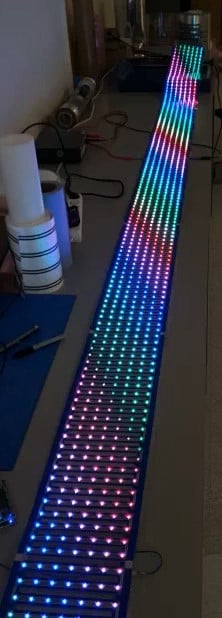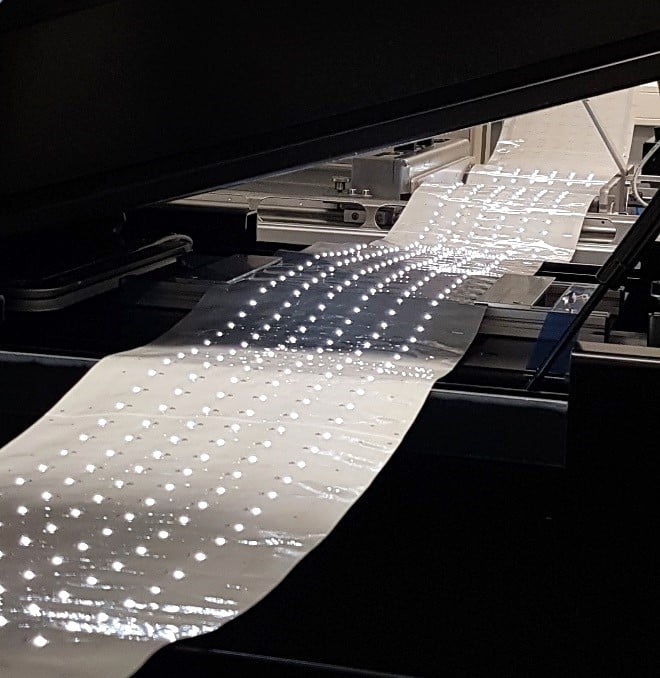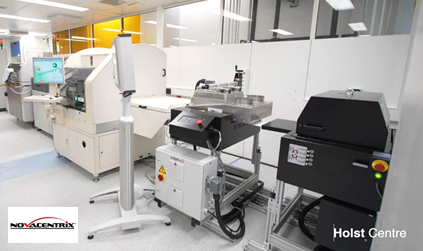Production form factor is a strong determinant of the product produced and cost per unit. Currently, majority of electronics are produced in a semi-batch sheet-to-sheet (S2S) process flow. In this mode, each board is fed through individual steps in sequence. However, in such a format, the size of the board is limited, the substrate would need to be dimensionally stable and the unit costs would be high. Consider the case of building an illuminated wall. In a S2S format, the illuminated wall will need to be in smaller pieces stitched together, the wall will be built on a rigid substrate, and has been cost prohibitive because of manufacturing and instillation costs.
What if the illuminated wall could be built like old fashion wall paper?
The digital nature of processing on PulseForge tools enables us to manufacture in a varying of form factors. A significant rethinking of how electronics are manufactured enables us to create a near-continuous production line in a roll-to-roll (R2R) format. In collaboration with the Holst Center – a leading innovation center in flexible and printed electronics –NovaCentrix has built a scalable PulseForge platform that allows reflow of standard lead-free solder on polymeric foils in a roll-to-roll format.

(above image: RGB LEDs on PEN produced on the pilot line)

(above image: roll of 0603 LEDs on PET produced on the pilot line)
Soldering on the PulseForge tools has been covered elsewhere. In short, this process uses preferential absorption of visible light at the junction to reflow standard solder alloys in a nonequilibrium format. For the Holst soldering demonstration line, a dual sided PulseForge tool was designed with capability to process suspended web of materials from both top and bottom – providing additional tunability of the process.
The concept of the illuminated wall is now fully feasible. Each section is large enough to reduce the number of interconnects and the substrate is a flexible roll that could be easily transported. Additionally, the physical form factor aligns with what’s currently used in construction and could easily be folded into wallpaper installation.
More advanced electronics with logics, sensors and batteries can be manufactured in such a format. Significant advances have been made to enhance the R2R production line. By utilizing ultra-fast placement and soldering technique, all units on the line can be working continuously at their optimum processing speed. This continuous mode of operation contributes to achieving high production rates and yields which are quite crucial to fulfil the promises of the printed and flexible market. The current R2R pilot lines are built on 150 mm or 300 mm widths. The production width can be increased to keep up with the desired high volumes. The final product is inherently flexible, cost effective and lightweight.

(above image: pilot line with integrated PulseForge at Holst Center, Netherlands)
- High throughput
- Low-cost operation
- Fully automatic
- Multiple sequential processing steps
- Handles varieties of substrates and components
- SMEMA compatible
- Light shielding
- Safety interlocks


One Response
Awesome Article !! Thanks for the detailed overview about Roll to Roll process. I’m sure this article will be very helpful for me and many people who are looking for this product.